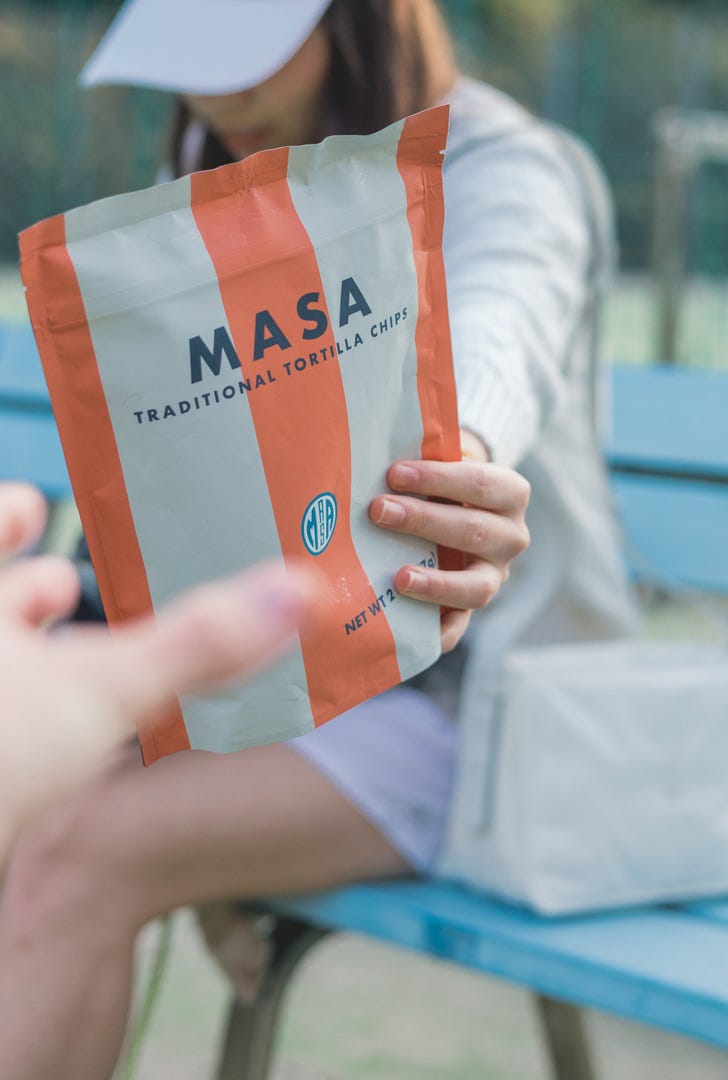The Decadent Diet, Part 2
What Should you Actually Eat? Starch Edition
Welcome to the second installment on the ideal diet of Tan Land, where we make no compromises on health or enjoyment.
In the first part, I discussed the most important food group: nutrient dense animal foods (check it out if you haven’t already).
In this post, we’ll discuss the next food group: starch, the food group that has supplied everyone from Roman Legionaires to French aristocrats.
Among many benefits, starch has the added distinction of being the single best accompaniment for nutrient dense dairy.
But many starches aren’t ideal. This article will explain which ones to eat, which to avoid, and end with a sample shopping list to give you an easy guide to follow next time you’re buying food.
But first…
The Myth of Low Carb
Meat and seafood have all the necessary micro-nutrients, which has led some to claim that you don’t need to eat anything else.
While a low-carb diet may be useful as a short-term treatment of certain serious health conditions, long-term it isn’t ideal for most people.
Yet everyone today seems to have an inherent fear of carbs. The delicious, decadent, crunchy carb has become the dietary boogeyman du jour.
This despite the fact that many healthy cultures have been devouring them for centuries.
Before we dive in, there are two helpful points to keep in mind that demonstrate the necessity of carbs.
Breast Milk
Low-carbers often reference a handful of cherry-picked human tribes that don’t eat any carbs and are still healthy.
Or do they?
Every human baby is (or, should be) breast fed. And human breast milk not only has sugar like all other species’ milks— it has the most. About 4x more than cow’s milk.
Curious.
Perhaps sugar is important for humans to eat?
Glycogen
But what about adults?
Without access to milk, honey, or any plant foods, the Inuit of Alaska eat zero common carb sources.
But that’s not the full story.
When mammals eat carbs, the excess is stored as glycogen in the liver and muscle tissues (endurance athletes and bodybuilders will be very familiar with this).
When an animal dies, glycogen remains in body and dissipates over time.
If you eat the meat when it’s fresh enough, then you eat the remaining glycogen directly, which is then stored as glycogen in your body.
Not only do the Inuit eat a lot of fresh meat, they eat it from sea mammals. And sea mammals store even more glycogen in their tissues (including blubber), and it degrades even more slowly.
The result is that they get about “15–20% of their calories from carbohydrates”.
Since most people do not eat fresh, raw sea mammal meat, they’ll need to get that 15-20%+ of carbohydrates from somewhere else.
And that is why we are talking about starch today (and sugar next time).
Starch
Starch is composed of long chains of glucose tied together. Simply, it is more anabolic than sugar (fructose), and if you are trying to run marathons, bulk, or otherwise put on or maintain weight, starch is your friend.
Unless you are actively trying to lose significant weight, I would include at least some starch at most meals.
What about fiber? If you follow this list, you will get all the fiber you need.
Grains
Like all seeds, grains have many anti-nutrients that can make them inflammatory. All of these must be traditionally prepared with a method that makes them more digestible. And you might not be able to digest some or any of them.
That’s fine. They are not strictly necessary (albeit delicious).
Wheat
Must be fermented. Sourdough bread, sourdough crackers, sourdough breadcrumbs, sourdough pastries. Whole grain, freshly milled is ideal. Pasta and any other unfermented flour products are a no go.
Rice
White rice only (brown rice absorbs a lot of arsenic and heavy metals from the soil). Basmati is ideal.
Corn
There is an abundance of corn in this country, and it is mostly GMO crap. But corn when properly nixtamalized is one of the most digestible grains out there.
MASA Chips (shameless plug) are a great example of digestible, nixtamalized corn
Oats
Sprouted oats can be very soothing. It also disagrees with some people. Worth testing out for yourself.
Other grains
There are plenty of other exotic grains that you can play with, but I don’t think they are worth the trouble (and this is from someone who used to sprout quinoa in mason jars every day for dinner). Unless you come from a culture where such grains are traditionally eaten, stick to the basics above.
Quality Concerns
Note that they all must be organic, as grains are the most pesticide-sprayed crops out there. And they should be from heritage strains to the greatest extent possible.
While farmers markets are best, since these are shelf-stable I will have online shopping recommendations at the end.
Root Vegetables
The roots of certain plants contain a lot of starch that helps the plant grow.
Often toxic when raw, many of them are worth eating when fully cooked. They tend to be less inflammatory than grains too.
Potatoes
This will likely be the staple root vegetable in your pantry. There are many types; find the ones you like the best.
Some people think the skin is good, others think it’s bad. I usually remove the skin when it’s thick, and don’t bother otherwise.
Best eaten fresh (not leftover), and bonus points if you slice and ferment them in a brine for 2-3 days at 60 degrees before cooking (this inhibits the glycoalkaloids which some people have problems with)
Sweet potatoes/yams/purple sweet potatoes/hannah potatoes/cassava
I’m not a huge fan, but definitely worth experimenting with. Same rules as cooking potatoes apply.
Avoid the “cassava starch” or other weird extracts on nutrient labels. Eat the real thing or bust.
Carrots and Parsnips
Carrots are great, and are the only thing on this list you can also eat raw.
Avoid baby carrots of course, bonus points if you get them with the leaves still on at the farmers market
Beets/Turnips/Radishes/etc.
We could go on for days. None of these are inherently bad, you have to decide if it’s worth it for you to eat them.
Onions/Garlic/Ginger etc.
Delicious. Just cook them well enough, and peel of the skins
Quality Concerns
Everything organic, and as local as possible. Best to get these from a farmer you can talk to who pulled them out of the root cellar two days ago. Distributors use all sorts of funky tricks to keep produce fresh for long periods of time.
Savory Fruits
Any fleshy plant organ that contains seeds inside of it is called a “fruit”. Yet most fruits do not taste sweet, and those are the ones that have a lot of starch.
Fruits are easily the most digestible plant food, since they are designed to be fuel for the seedling and to be enticing to animals who will eat them and then spread the seeds around.
Despite that, most savory fruits should still be cooked.
Zucchini
Skin on, skin off, baked, sauteed, you can’t really go wrong with this one
Squashes
Spaghetti squash, acorn squash, butternut squash, there are too many to count.
Do not eat the seeds. Bake it until it’s tender.
Pick the ones you like best. For me that’s spaghetti squash
Best eaten seasonally (i.e., the fall and winter). Squash in the spring is unnatural
Cucumbers
These contain cucurbitacin, which can be tough for some people. Fermentation helps, so ideally they should be eaten as real fermented pickles (not the ones that are soaked in vinegar)
Tomatoes
You can eat them raw or cooked.
Tomatoes are very high in lectins though, so evaluate how your digestion feels after. Best to avoid if you have leaky gut or other digestive issues
Peppers
You can also eat them raw or cooked.
As a nightshade, they contain solanine, along with glycoalkaloids and lectins. Thus people with gut issues will probably want to avoid them too.
Regardless, they are best eaten in smaller quantities, ideally without the skin
Eggplant
Also called “crazy apple” in Italian, as delicious as they are I would probably avoid them unless your gut is rock solid.
Even then, only eat them rarely. They are absurdly high in lectins which mess with the gut lining, and overtime leaky gut leads to brain function issues. Hence the name “crazy apple”
In sum, the zucchini and squashes are your friends here, and everything else should be eaten rarely. The healthier your gut, the more adventurous you can be.
Quality Concerns
Like all foods, the deeper the color, the more nutrient dense, and the less fertilizer was used.
Only buy them organic, as you often eat the skin (which is where the bulk of the pesticides are).
For fruits, it is especially important to buy them seasonally since they do not store well without artificial methods, unlike root vegetables which can stay in the root cellar all winter.
Sample Shopping List
To make this as easy as possible, here is an example shopping list with recipe ideas of starches that would work well for most people. I eat most of these things on a weekly basis.
You could take this list to the farmer’s market and Whole Foods this weekend and buy everything you need from this food group. Some of them you can buy online, and links are provided.
Convenience
It’s worth calling out that the main problem with people’s carb consumption is the quality. Quality carbs are not really convenient— you have to boil, soak, ferment, bake, etc.
And the convenient carbs are full of seed oils and pesticides. However, don’t let that deter you from finding and preparing the ones that are actually good.
Keep reading with a 7-day free trial
Subscribe to Tan Land: Natural Health and Beauty to keep reading this post and get 7 days of free access to the full post archives.





